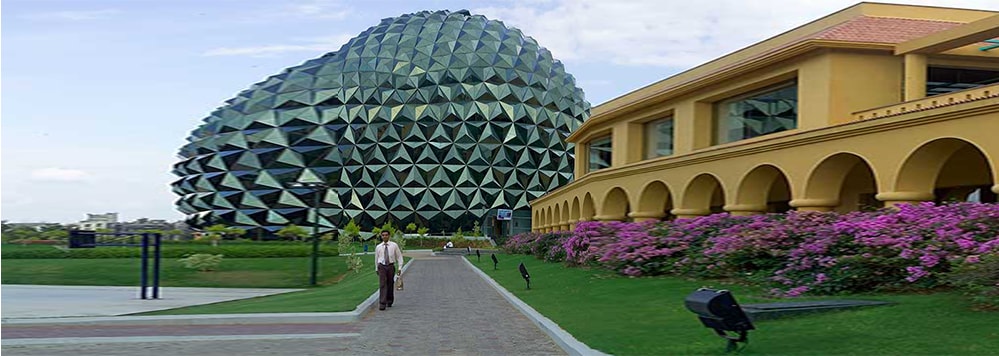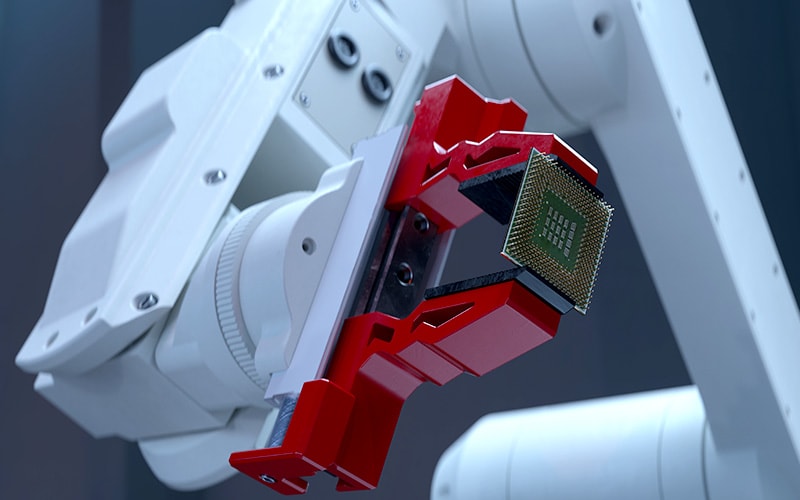Smart campus design can deliver broad and scalable advantages in known categories, such as energy efficiency, water conservation and waste management, and physical and cybersecurity. New tools and integrations of sensors, artificial intelligence and automated systems hold the promise of even more impactful individualized benefits. That’s particularly true when those systems are implemented with user experience as a priority. Examples include guiding a student to the nearest available parking spot, automatically reserving a study space and conveying the best time to visit the cafeteria. The opportunity for digital-minded institutions is further magnified because the majority of educational institutions remain less technologically mature than business and retail enterprises.
From simple automation to smart automation
Smart space technology has its roots at the intersection of technology and facilities. The early days of smart space applications focused on automatically dimming lights in unused spaces, scheduling temperature adjustments for heating, ventilation and air conditioning systems and building access control. Power flowed through the switches, and the cooling system remained at open throttle unless a human flipped the switch or dialed back the thermostat. Fundamental digitization and automation creates cost savings and energy conservation in any building, but across a campus, those savings and efficiencies are multiplied. For example, as part of an effort to reduce its greenhouse gas emissions, Penn State University found that system upgrades and modernizations generally paid for themselves in cost savings within 10 years.1
Further, a university actively conserving power sends a positive message about the conservation values of that institution — values shared by a large proportion of millennials and college students. Related surveys by Gallup indicate that 67% of people ages 18 to 29 believe global warming is a real, man-made threat and that they, like millennials, value being part of organizations and communities that focus on environmental sustainability.2
In security terms, the change from physical locks and keys to smart card access is more efficient and convenient for users and administrators in any context. On a university campus, it also allows for additional layers of security, awareness and control of the environment. That’s a message that resonates with students and parents.
Taken together, mature smart space technologies contribute toward a welcoming and appealing environment. Education stakeholders, including prospective students, parents, students, faculty and staff, are all particularly attracted to smart space benefits in broad altruistic terms and in specific personal interests.
Reinvigorated context and community
The good news for educational institutions is that there are examples to follow. Digital technology and automation have advanced faster in the realms of commerce and information than they have in physical spaces. We live in a world where shoppers can buy anything at any time and information is abundant and ubiquitous, but in managed environments such as campuses, similar advances have not been entirely thought through, let alone implemented.
The development and integration of smart technologies, including smart whiteboards, classrooms, parking decks, information systems, gyms, food access and wearables, put smart campuses on the cusp of a new experience for students. But those individual technologies rarely work in concert.
Even as classrooms have become more technologically advanced and teachers’ content has become more media-rich, the entire end-to-end student journey has not achieved full technological integration. Think through it from a student perspective: Imagine being able to jump back to a recording of a class and hear the question you asked and the teacher’s answer.
On campuses as well as in workplaces, the world is full of friction points that get in the way of the sort of deep reflection that leads to innovation. A fully realized smart campus has the potential to remove more and more of that friction and allow the student to focus on learning.
User experience rules
Executing a high-quality smart campus design can be viewed through a three-tiered approach: deploying, connecting and properly managing systems. Smart infrastructure and connectivity are required, but smart environmental design and a focus on the individualized user experience (or UX) create a powerful, complex system.
Figure 1: Three tiers of smart campus
Source: Infosys Consulting
Achieving smart environmental design requires connecting sensors and systems from disparate smart space technologies and then matching those systems with how the individual moves through the smart campus.
Infosys’ own 350-acre smart campus for corporate education in Mysore, India, is designed in a grid fashion with essential amenities, utilities and services for individuals, such as parking, food facilities and offices repeated in close proximity. On a large campus, requiring an individual to walk four kilometers to meet her basic requirements would not be a smart design.
"Where and how you put tools to work is what makes a wired digital campus a truly smart campus"
Said another way, it’s how and where you put the tools to work that make a wired digital campus a truly smart campus. Imagine a scenario where a user can book a conference room using a mobile device and then invite others to the appointment. In a more advanced scenario, she would have a virtual digital assistant to help plan the meeting and the rest of her day, and the other attendees would receive instructions on the meeting and guidance on how to get there, when to depart and where to park. Materials for the meeting and past meeting notes can be made readily available and shareable, not to mention environmental and lighting controls are all set ahead of the host’s arrival. When multiple systems are integrated properly, the user is confronted with fewer interfaces and fewer requests for input. A great user experience is a seamless combination of multiple small, good experiences.
Consider these two imagined student experiences: In both examples, the college has implemented smart campus technologies. The difference is in the design and attention to user experience.
UX University
Fifteen minutes before class, the student drives to campus and follows the guidance signs to the nearest open parking space. Walking past the cafeteria on the way to class, she receives a menu of the day’s specials and preorders lunch to be picked up after class. As she approaches the classroom building, the RFID chip in her student ID recognizes her and unlocks the automatic doors. She arrives to the classroom, and the automated climate control kicks on to keep the room at 75 F (23 C). The professor walks in, shares lecture notes instantly via Wi-Fi to the classroom student group and begins his presentation, with supporting images and video files cued on the classroom smart board. At the end of the class, the professor transmits the results of last week’s quiz to the students and their results are automatically added to their transcripts. The student leaves class and walks to the cafeteria, where her order is waiting.
Faulty Tech
The line to the parking lot snakes back to the expressway, thanks to the backup at the lot access gate. The key card access point is functioning, mostly, although most commuters are having trouble reaching the contact point. The student isn’t too worried because traffic always backs up in the time right before his class, and the lecture always starts late. As he makes his way to the room, he shivers — the room is cold, thanks to the automated system programming for yesterday’s 100 F (40 C) weather. Before he sits, the student starts to log in to the Wi-Fi network on his laptop, because the network is slow to load and only gets slower as the lecture hall fills up with students, computers and smartphones. He’s not the only one late, as the professor halts her introductory talk to go to unlock the building door and escort in her guest speaker. The guest couldn’t figure out the access control system, and it’s not the first time. As the guest speaks, the professor begins handing out paper copies of last week’s quiz and drops them. The student’s paper falls on top and all his classmates see his grade of 72. He picks it up and underneath he finds a copy of his professor’s CV and an application letter for a job at UX U.
As shown in these examples, a smart campus established and maintained with a focus on individualized user experiences transcends generalized institutional benefits and reaches toward personal comfort and user delight. Those united benefits hold the promise of helping in recruiting students, impressing parents in the postsecondary context, and recruiting and retaining elite faculty members and staffers.
Smoothing out everyday friction points also has the benefit of improving engagement, productivity and even health. Georgia Institute of Technology (Georgia Tech) in Atlanta has partnered with application developer Cytilife to aid students on the health side of the journey by helping them plan ahead for visits to the campus fitness center.3 The system uses smart sensors and an AI assistant to personalize advice for students. This highlights a critical demand from digital native students: Growing up in a world where information is everywhere and always available, they want to know everything beforehand and connect to anyone from everywhere.
Smart campuses enable live enterprises
Done correctly, a smart campus deployment fulfills that desire to know beforehand. It creates a robust, agile environment that adapts to an individual’s needs. In order to lead in a world of technology, academic institutions should draw inspiration from the corporate example of live enterprise: a constantly evolving and sensing organization built with a culture of agility that can sense, process and respond in real time.
The Infosys Mysore campus is pursuing this, continuously upgrading since its initial smart campus implementations a decade ago. An internal estimate from Vikas Makkar, regional head of infrastructure at Infosys, indicates that 80%-85% of original systems in the campus have been retrofitted or upgraded since 2008. Those upgrades offer even more efficiency than the original smart campus implementation, he noted. While the campus has continued to grow, Mysore has reduced monthly energy consumption by 56% since 2007-08, from 297 kilowatt-hours per employee to 133 kWh per employee. That has resulted in $200 million in savings on electricity bills for the company, according to Makkar.
"A smart campus anticipates and responds to a student’s needs"
And now, new system upgrades are turning toward personalization. The initial implementation for automated air conditioning relied on a sensor on the wall to determine whether a room’s temperature was appropriate. The company has since partnered with application developer Comfy to enable individual employees to control their immediate climate instead.4 The app features only three options: “warm my space,” “cool my space” and “I’m comfy.” Infosys is further piloting other individual-focused initiatives to improve parking in human ways, such as by guiding a worker back to where he or she parked and streamlining building access controls to better manage instances where an employee may have forgotten or misplaced an access badge.
Figure 2: A connected campus enables many benefits
Source: Infosys Consulting
Seize the day: A smart opportunity
Educational institutions are the training grounds for future citizens and leaders. But technology also has the capacity to disrupt this, and learners can find other ways and places to study if schools and colleges do not evolve. In order for students to thrive in this new age of digital innovation, their learning must move beyond screen-based delivery to be contextual and personalized. The entire physical space of the campus must come alive to give a truly immersive experience.
To make this leap, campuses and educational institutions have to move away from their traditional “uptime focused” spending mindset. If they don’t, digital native students will seek out learning elsewhere. Proper investment in the digital future starts with a student-first approach to smart campus transformation: Create a vision of what university life means. Define the experiences that will enhance learning, research and collaboration. Devise ways to run these operations in a sustainable manner at an optimal cost point.
And because this is a large undertaking, find partners to share the load.
Developing a smart campus gives educational institutions the opportunity to capture magnified versions of traditional smart space benefits and to create differentiated rich experiences for a host of stakeholders, including students, faculty and others. Those benefits grow even greater when the smart campus is executed with a focus on individual users and a culture of continuous sensing, responding and upgrading as part of a true smart campus ecosystem.
References
- “How Penn State Is Cutting Greenhouse Emissions In Half – And Saving Money" National Public Radio Morning Edition, Oct. 4, 2019
- “Millennials Worry About the Environment – Should Your Company?,” Jennifer Robison, Gallup, May 29, 2019
- The Connected Campus: Using Sports Technology to Improve Student Health, Well-being and Success,Lehigh University, August 2017
- Comfy Goes International with Infosys, March 23, 2016









